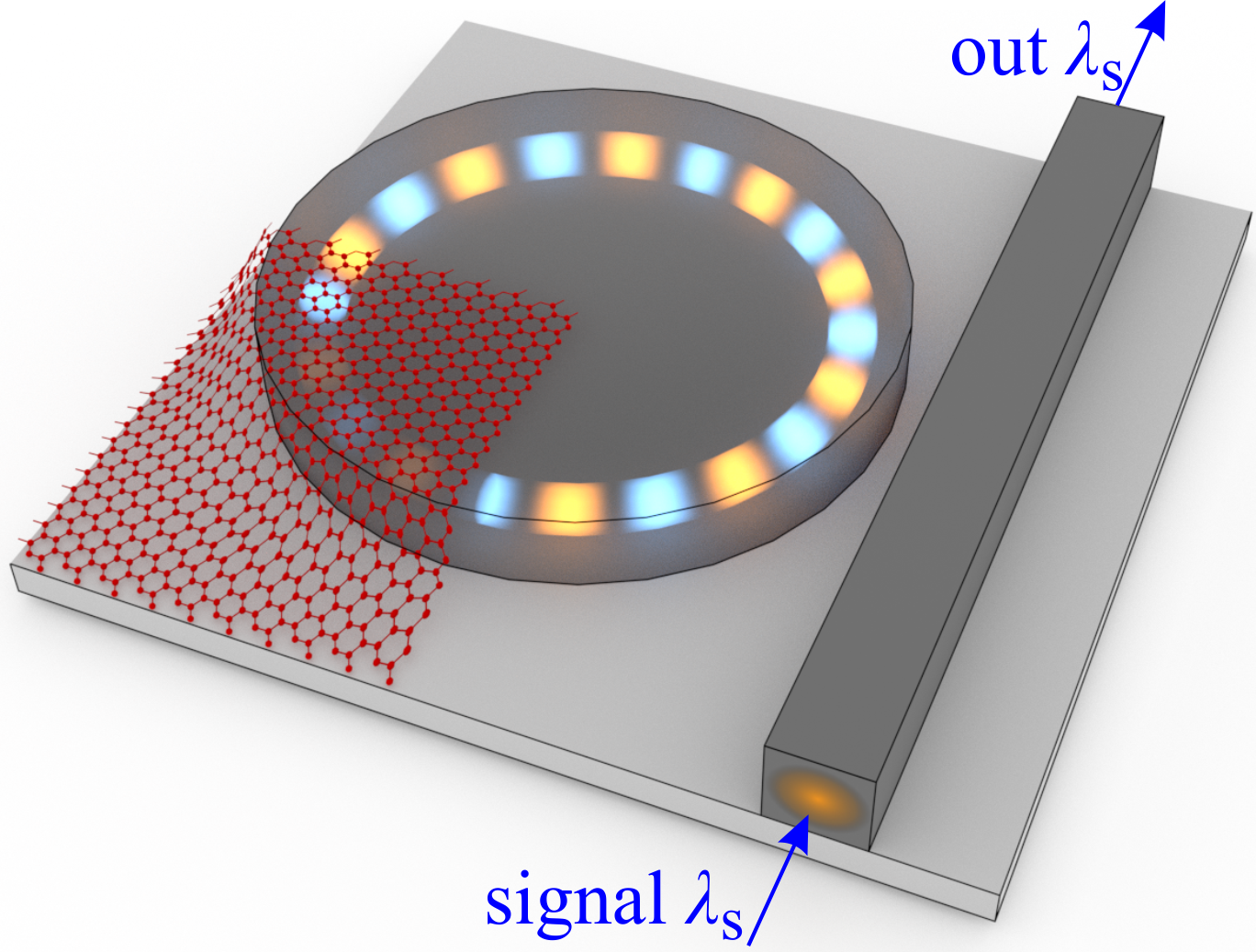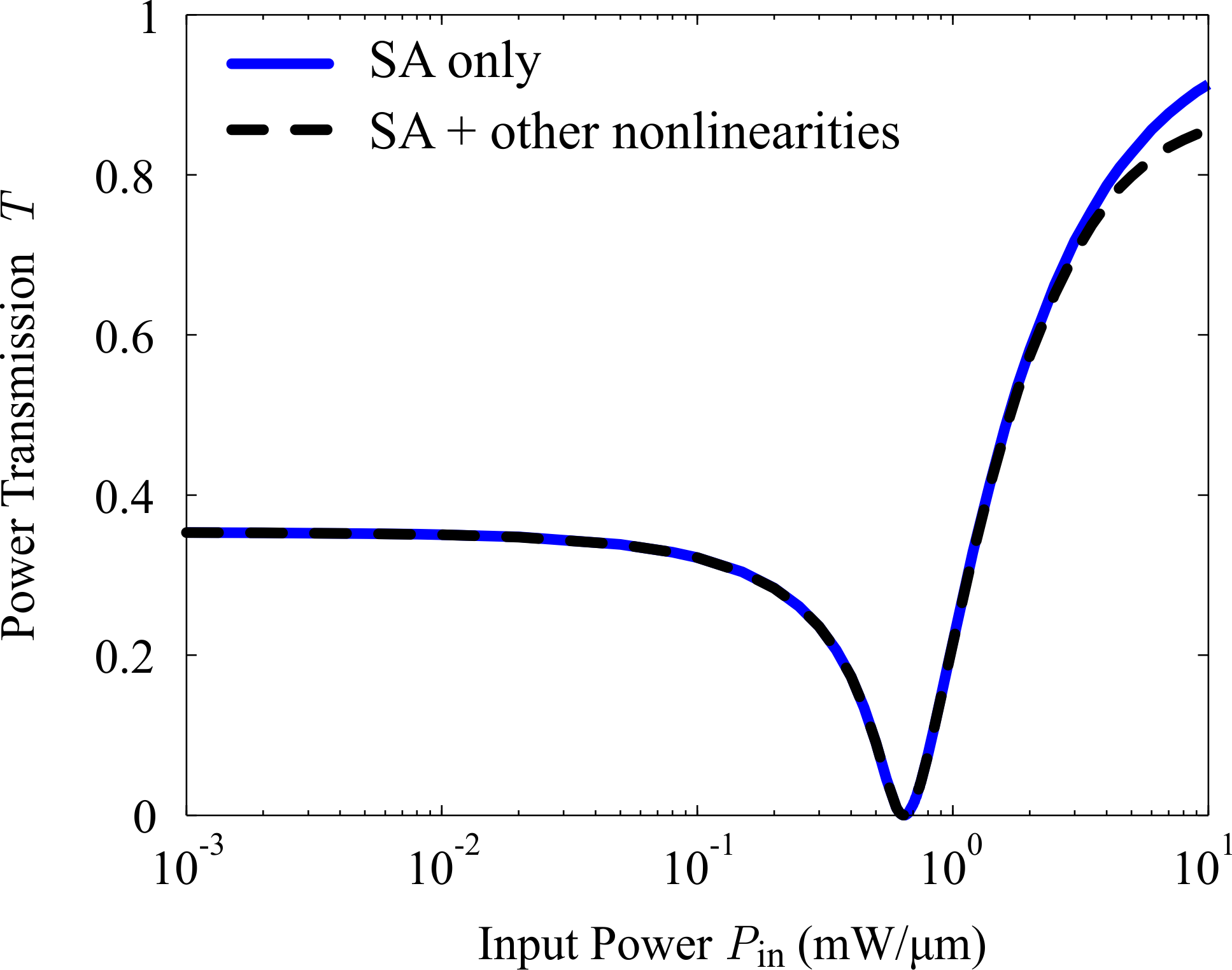
Graphene saturable absorption in micro-resonators
The concept of all-optical loss manipulation in graphene, combined with the enhanced functionalities of resonant structures, such as the graphene-enhanced silicon disk resonator of Fig. 1, provides the means for low power and ultra-fast control. Cavities enhance the light-graphene interaction by the intensity build-up provided under resonance conditions and they also intensify the loss manipulation effect, owing to the presence of a critical coupling condition. The latter allows the transition from a low to high transmission state with very moderate changes in light absorption. Such advantages are quite promising for the realization of silicon-based integrated nonlinear resonators enhanced with graphene, with potential for mW power requirements, as supported by the curve depicted in Fig. 2.
The potential for low-power interactions is also beneficial from the perspective of suppressing other unwelcome nonlinear effects that are present in graphene and the underlying SOI platform. Those effects are the instantaneous Kerr effect and two-photon absorption (TPA) in graphene, both of which are recently found being orders of magnitude larger than their respective counterparts in silicon. Nevertheless, although moderate in silicon (compared with graphene), TPA produces free carries with finite lifetime which, in turn, have a significant impact on silicon macroscopic properties (refractive index, absorption); in the literature they are referred to as free-carrier effects (FCEs). FCEs are limiting phenomena when targeting ultra-fast all-optical elements, due to their finite recombination time in the order of nanoseconds. As Fig. 2 reveals, the above nonlinear phenomena are not established in the SA power range, but develop for at least one order of magnitude higher input power.
The computational analysis of resonant systems under the presence of the diverse and complex nonlinear effects described above is a challenging task, especially when attempting to accurately capture the rich response of close-to-practical-realization nonlinear resonant elements. The tool towards the success of such a demanding task is the temporal coupled-mode theory (CMT), downgrading the complex spatiotemporal Maxwell's equations into simpler and easier to solve, solely time-dependent differential equations. Nevertheless, it is still possible to capture spatially dependent phenomena with the CMT, such as the carrier diffusion on graphene. Such framework retains excellent accuracy, eventually allowing fast and efficient design, while simultaneously providing physical insight for each phenomenon.
References
[J.8] Nousios G., Christopoulos T., Tsilipakos O., and Kriezis Em. E., "Dynamic Routing through Saturable Absorption in Graphene Photonic Resonators: Impact of Carrier Diffusion and Finite Relaxation Time", Journal of Applied Physics, 131 (5), 053104, (2022). [pdf]
Fig. 1: Silicon disk travelling-wave resonator, partially overlaid with a graphene monolayer inducing the loss saturation effect.
(Click on image to enlarge)
Fig. 2: Power transmission of on all-pass resonator under the influence of saturable absorption. As input power increases, transmission toggles from a high to a low output state, with mW power requirements. Other nonlinearities (Kerr effect, free-carrier effects) only establishes for significantly higher input light intensities.
(Click on image to enlarge)



